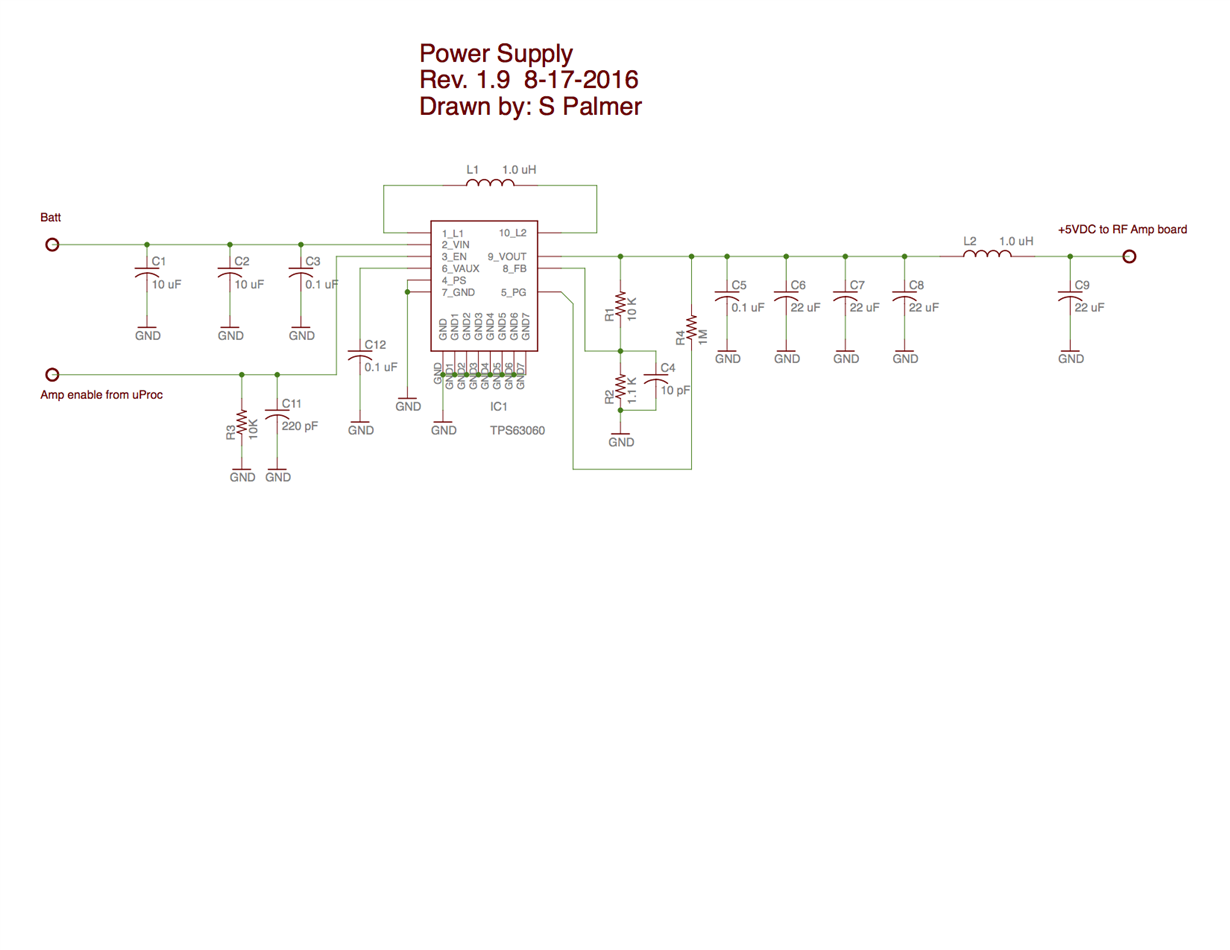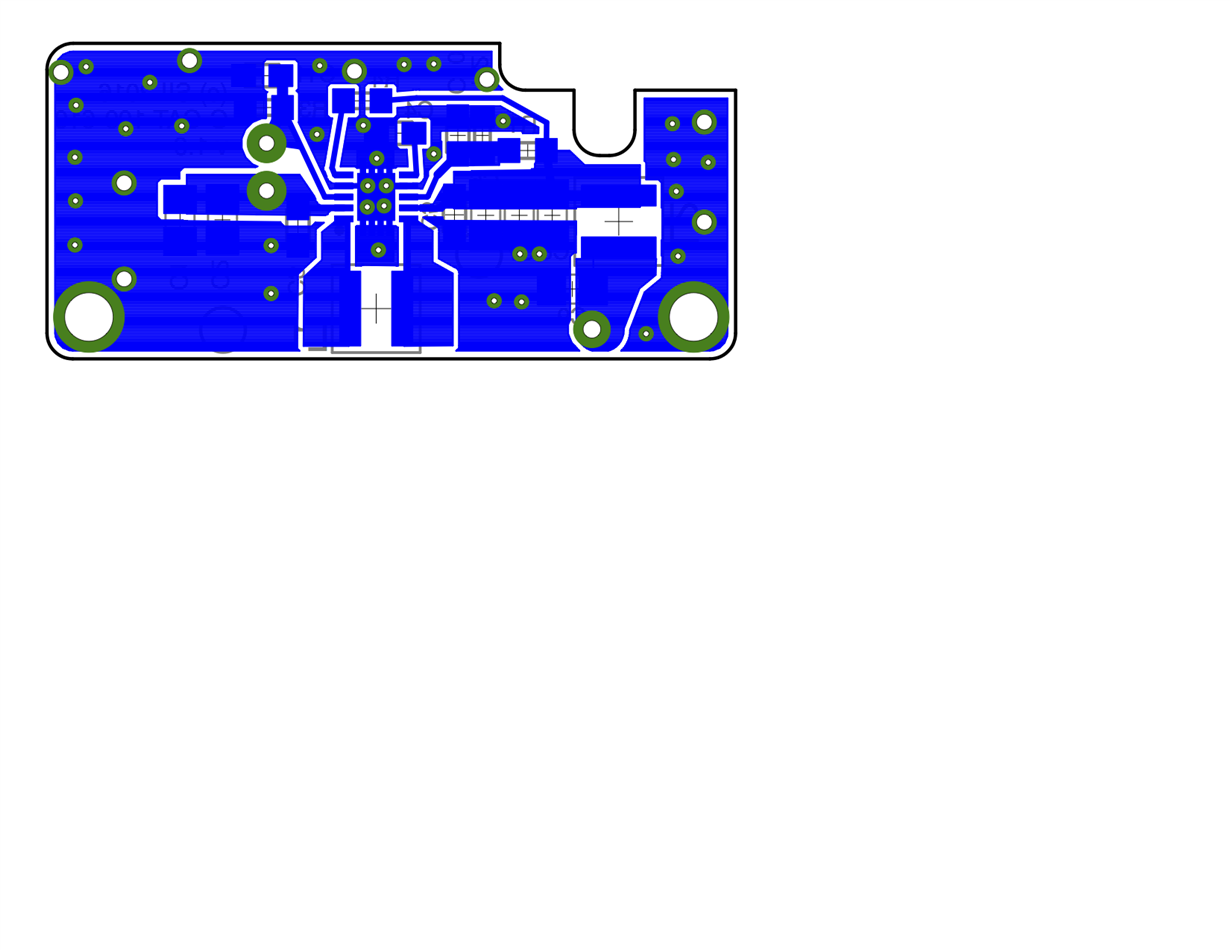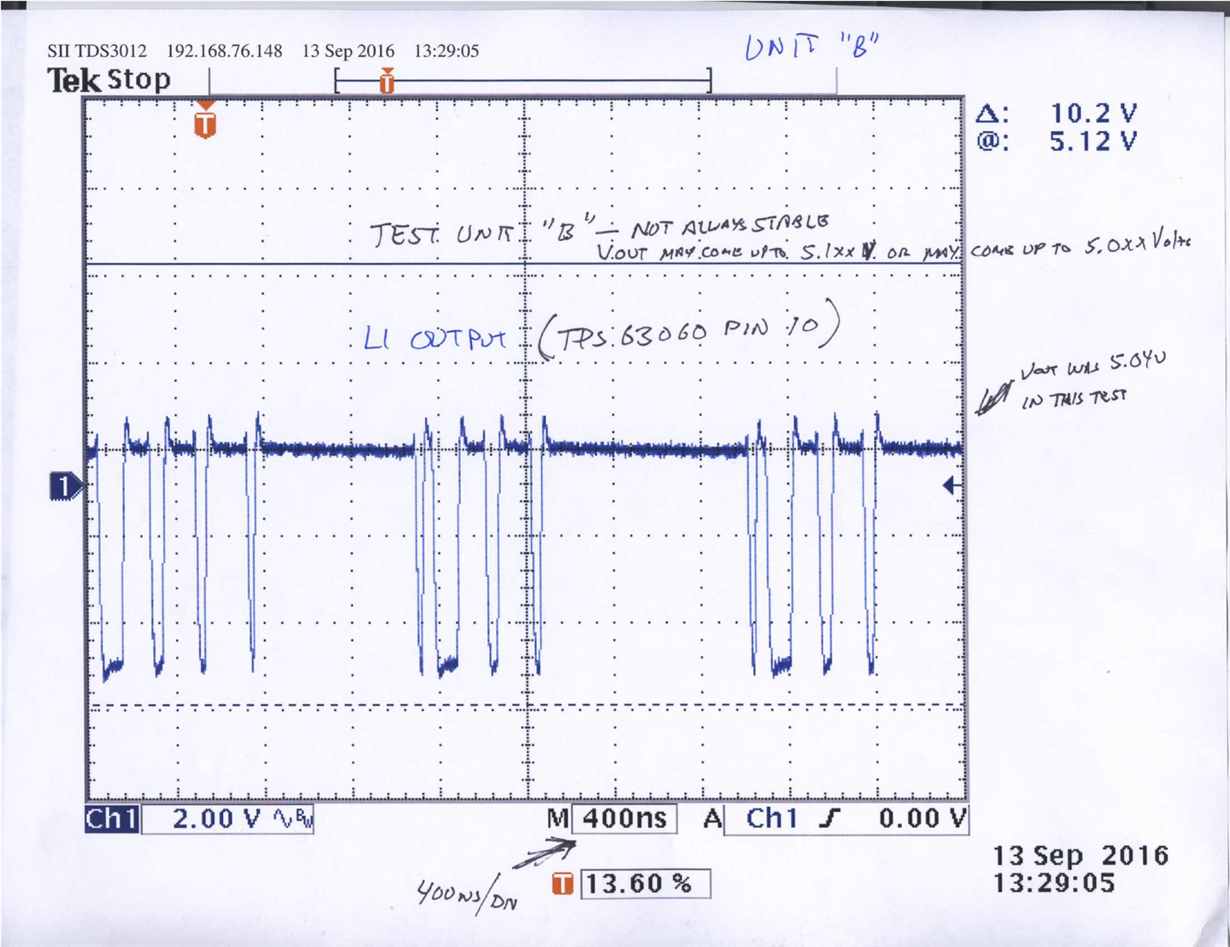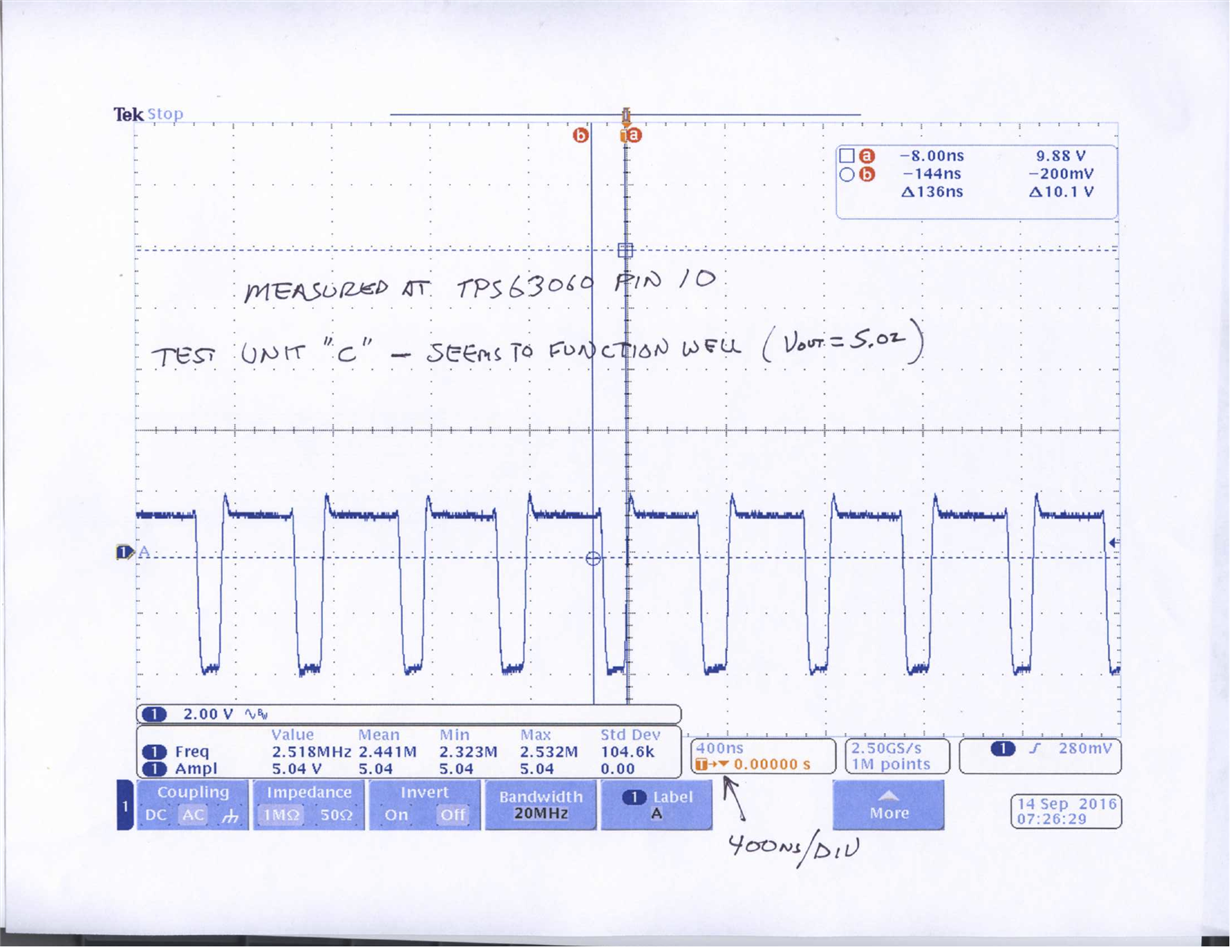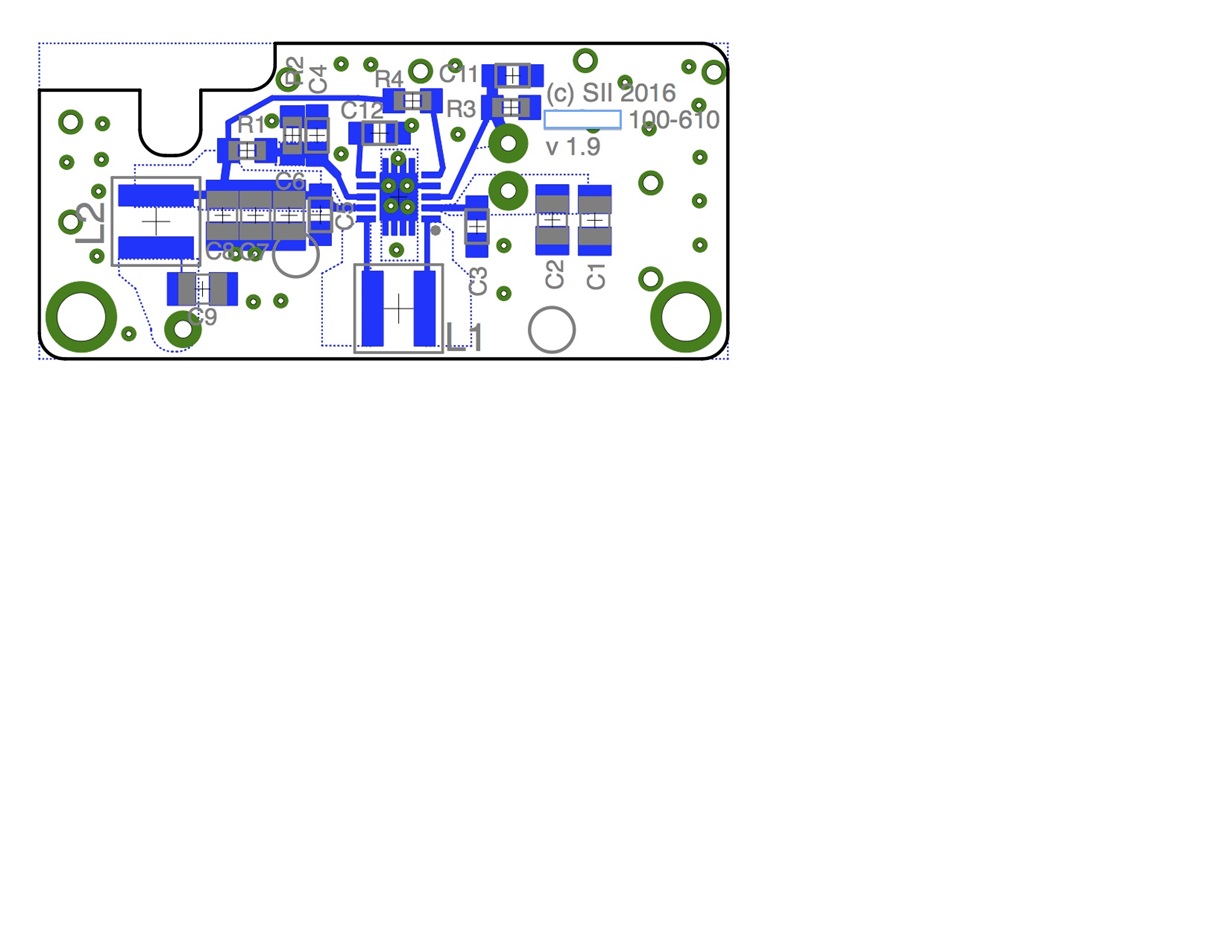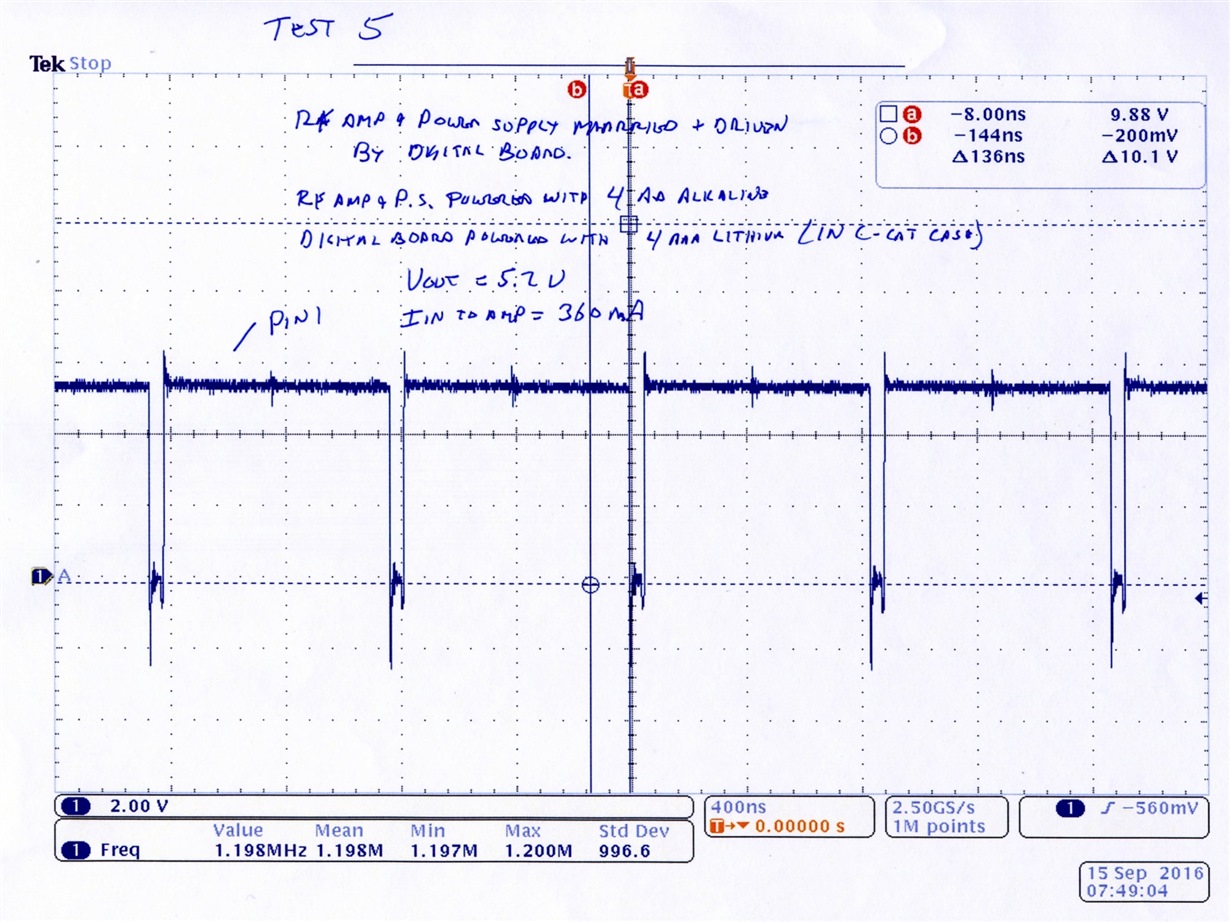We are using the TPS63060 on a small circuit board to power approximately a 500mA load at 5.0VDC. Supply voltage to the circuit can vary between 4.25 Volts to 6.8 Volts in application, however, in the below described test, the input voltage is always 6.0V. We have carefully followed the design criteria in the documentation and have examined parts layout, component values and workmanship.
The problem: Sometimes the buck-boost regulator will come up in an unstable mode with an output of about 5.1-5.2 volts instead of the desired voltage of 5.0V. The TPS63060 also gets excessively warm in this unstable mode. We have tested both low impedance voltage divider FB circuits (R1 =10K, R2=1.1K with 10pF across R2 (C4) and also with a value of C4 of 50pF) and high impedance voltage divider FB circuits (R1 =1M R2=111K with 10pF across R2. If the device comes up in the unstable mode, we can sometimes "fix" it by touching a scope probe to the junction of R1 and R2 (FB input).
Some of the circuit boards seem to work fine and others exhibit this unstable behavior. We suspect that something in the design may be marginal and that the device is just on the edge of stability/instability.
We can send scope traces of waveforms on each side of L1 if this will be useful.
Please help! We are temporarily stumped and must solve this! Thanks!


